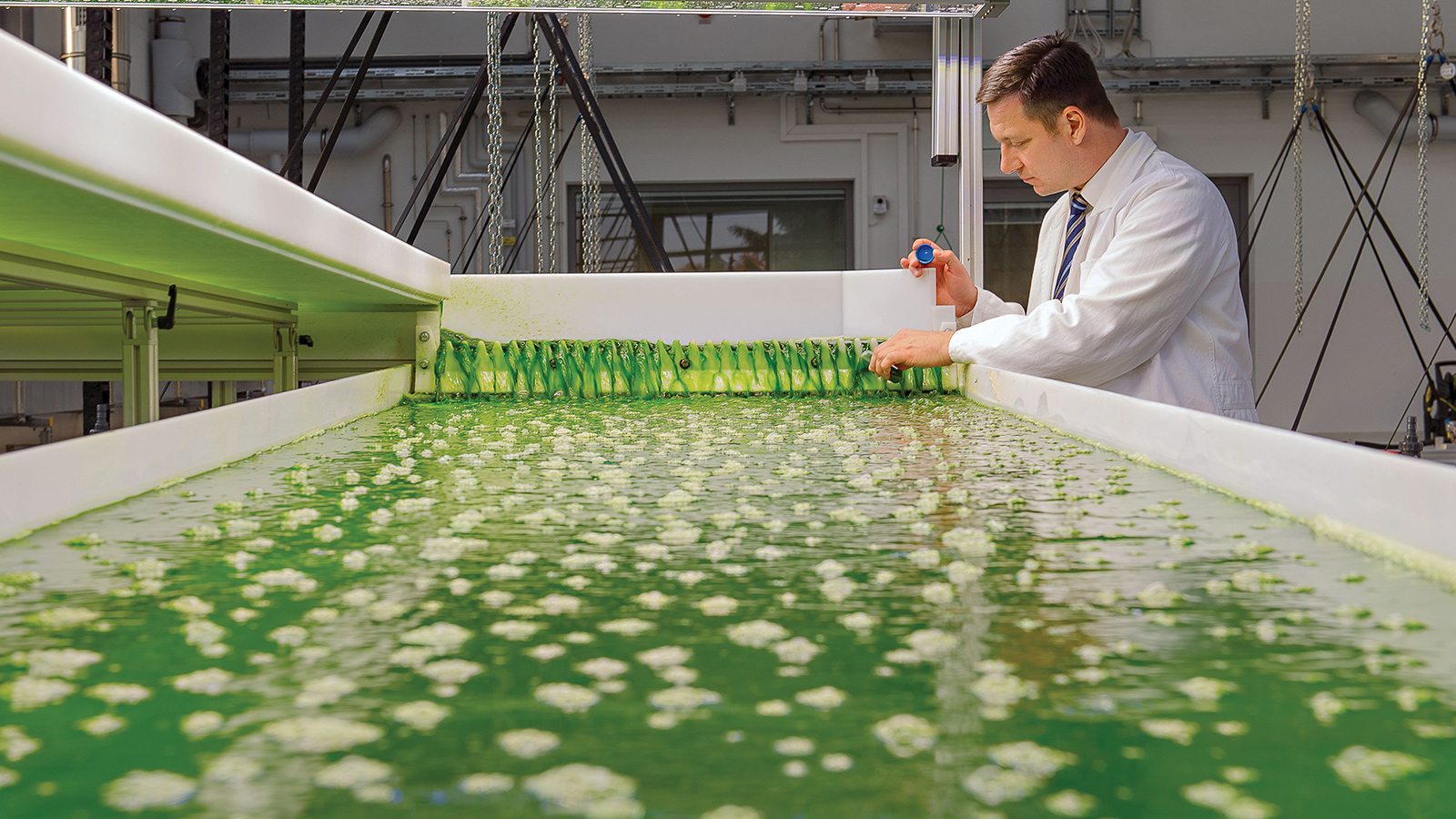Stay Up to Date
Submit your email address to receive the latest industry and Aerospace America news.
Research raises the possibility of replacing petroleum with algae in carbo fibers
Goopy algae and the composite structures in aircraft seem about as unalike as it gets, but they are in fact coming together.
In a project dubbed Green Carbon, researchers in Germany are investigating how to economically derive oil from algae as a step toward producing carbon fibers that would otherwise be made from the carbon in petroleum.
The researchers have so far made small batches of fiber and turned them into composite material by the normal method of weaving them into a fabric and wetting it with resin plus a hardening agent. The task now is to scale up the cultivation of algae and the manufacturing.
The aerospace industry loves composites. Half the airframe of each Boeing 787 Dreamliner is constructed of petroleum-derived composites, and those parts weight 20% less than if they were made from aluminum. The Airbus A350 XWB likewise incorporates carbon fiber in its fuselage and wings.
The downside of composites has been their carbon footprints, and that’s the problem TUM, for the Technical University of Munich in Germany, and Airbus aim to solve.
Algae could flip this carbonaceous script. These unicellular organisms pull carbon from the atmosphere and incorporate it into triglycerides — fatty molecules that contain a backbone of glycerol. The researchers have chemically cleaved off this glycerol and turned it into polyacrylonitrile fibers, called PAN. Charring PAN at around 2,000 degrees Celsius in a solar-powered oven yields carbon fibers, says project lead Thomas Brück, a professor of synthetic biotechnology at TUM.
Algae offer advantages over other bio sources. They grow 10 times faster than plants, Brück says, while accumulating 40 times more useful lipids (oil) per hectare of cultivation. They need vats of wastewater or seawater rather than arable land. “Therefore,” says Brück, the algae “do not compete” with food crops. In the U.S., about 40% of the corn yield is made into ethanol.
At TUM’s AlgaeTec facility, built in 2015 in Ottobrunn, Germany, researchers are determining the optimal lighting and climate for one algal species of particular interest, Microchloropsis salina. The TUM team is considering a region in the south of Spain for a first demonstration plant.
Beyond making carbon fiber composite materials like those in the 787, researchers are also mating carbon fiber with granite. This fiber-plus-rock material combo is lighter than standard aluminum, several times stronger than steel, and obviates plastics derived from fossil fuels.
Before you see JetBlue relaunch itself as JetGreen, more work lies ahead for Green Carbon. “We cannot build an entire airplane yet,” says Brück. Before graduating to major components such as the airframe, some early applications of the algae-grown fibers paired with granite could be aircraft floors and armrests. Brück says discussions are also ongoing with project partner Airbus about the material’s potential in small autonomous or personal flight vehicles.
Overall, the Green Carbon effort is showing potential for building carbon-neutral or maybe carbon-negative aircraft that would remove more carbon from the atmosphere than they put in. Says Brück: “We hope that this vision will become reality with our materials.”
About Adam Hadhazy
Adam writes about astrophysics and technology. His work has appeared in Discover and New Scientist magazines.
Related Posts
Stay Up to Date
Submit your email address to receive the latest industry and Aerospace America news.





